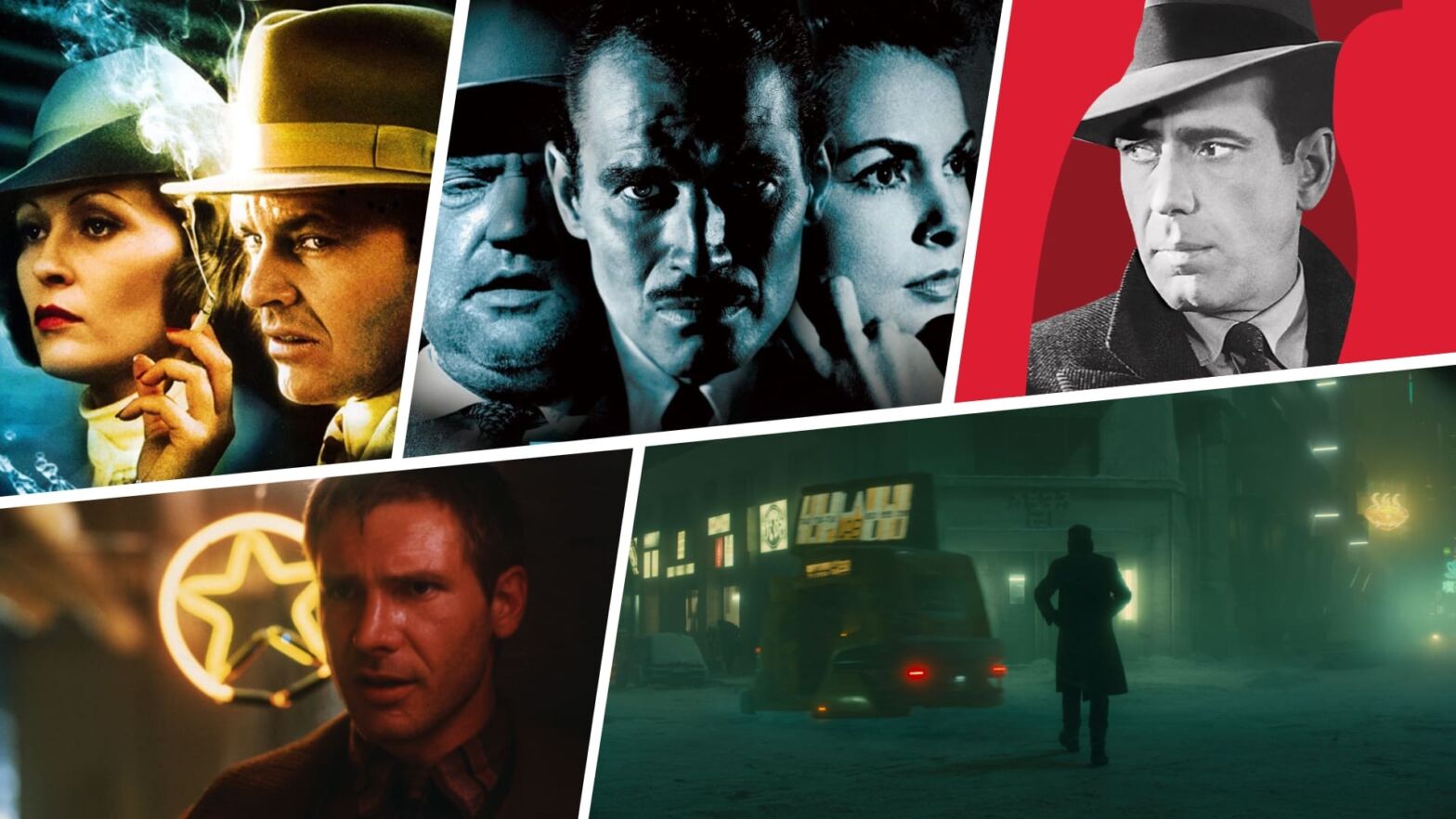You’ve probably heard the term ‘film noir’ hundreds of times. You may associate it with detectives and femme fatales running around in black and white. But what is film noir, really? Well, it turns out it’s not so clear cut, but there are some elements of the style that are fairly obvious. Let’s get into it.
Define Noir
What is film noir, exactly?
Is it a style or a genre? Cine freaks and professionals alike, can’t seem to decide. But we came up with the best definition we could. And then we'll jump into a few examples from classic cinema.
FILM NOIR DEFINITION
What is film noir?
Film noir is a stylized genre of film marked by pessimism, fatalism, and cynicism. The term was originally used in France after WWII, to describe American thriller or detective films in the 1940s and 50s. Though, Hollywood’s film noir stretches back to the 1920s. Film noir literally translates to “black cinema” and French critics used it to describe Hollywood movies that were saturated with darkness and pessimism not seen before.
It’s hard to say if it's is a genre or style, and the elements of noir listed below do not all have to be present for the film to be considered noir. But they are extremely common with this style.
COMMON ELEMENTS OF FILM NOIR
- Anti-hero protagonist
- Femme fatale
- Tight, concise dialogue
- High-contrast lighting
- Post-war disillusionment
Noir Genre
Film noir originated in a time of angst
This style of filmmaking was characterized by a painful time in history. Cynicism and pessimism from the Great Depression were ingrained in the American psyche. Then came WWII, which sent many men to the frontlines while many women took up the jobs in their absence.
After the war, there was a period uncertainty. Men returned from the battlefield with trauma, and the world lost quite a bit of innocence. Upon their return, the theory goes, men found women had shifted their role substantially. Housewives had become workers themselves so there was a perceived disruption to the gender roles that had been in place for decades.
In response to this insecurity, film noir gives us tales of men being taken advantage of by powerful and sometimes sinister women. Again, this merely the theory about how and why film noir became such a prominent style/genre in the post-war period.
The truth is that many of the iconic film noir movies that Hollywood produced in the '40s were based on novels written in the '30s. So, it can be argued that WWII had nothing to do with the source material but that it might explain the popularity of the films made later.
Examples from Cinema
Film noir examples
What characterizes cynicism in cinema? Is it dialogue dripping with sarcasm and mordancy? Or is it simply the high contrast lighting in each scene. Notice the bleak feel of all three of these classic film noirs.
The Maltese Falcon (1941)
Starring Humphrey Bogart, this mystery noir made a lasting impact with its spectacular cinematography and menacing use of shadows.
Humphrey Bogart bringing noir to the forefront
Laura (1944)
Dana Andrews, Gene Tierney, and Vincent Price star in this noir classic that boasts incredible acting and a staple of the genre.
By the mid 40's, more noir started popping up
The Blue Dahlia (1946)
An Academy Award nominee for best original screenplay, this murder mystery noir features the popular pairing of Alan Ladd and Veronica Lake. The Blue Dahlia is a story about a sailor who comes home only to discover his wife is having an affair and his son has died due to his wife’s alcoholism. It is one of many noirs echoing the disillusionment of wartime.
Film noir captured America’s cynicism in Blue Dahlia
Touch of Evil (1958)
According to many critics, film noir ended with the 1958 release of one of Orson Welles' best movies, Touch of Evil.
Today, there are films that are influenced by the genre (or style)...
Mulholland Drive (2001)
It seems like almost anything David Lynch does echoes noir. Mulholland Drive's look and feel was surely influenced by film noir.
Lynch’s mind-bending, Mulholland Drive is surely noir influenced
Noir has a touch of a madness in each scene. The stark lighting and heavy use of flashbacks all capture the headiness of the era, and the frequent murderous plots only heighten the pessimism.
There are specific lighting techniques that build these grave worlds, read our up next article.
Related Posts
Up Next
What is Chiaroscuro?
Interested in going deeper? Maybe darker? Our next post comes just a little southeast of our French friend noir, and explains this Italian lighting technique and how its used to create the noir style. Learn about chiaroscuro below.
Up Next: Chiaroscuro lighting →
Showcase your vision with elegant shot lists and storyboards.
Create robust and customizable shot lists. Upload images to make storyboards and slideshows.
